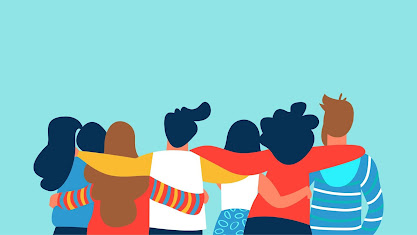Working side by side is a central aspect of the Clubhouse model that unwinds people’s internal stigma about mental illness. The author Andy Wilson describes his experience from when he first started working as a staff for a Clubhouse to when he realized the importance of his supervisor’s advice to be a part of the Work Ordered Day and build relationships. Andy quickly learned that no amount of academic or work experience could prepare him for the unique environment of the Clubhouse, where members and staff work as colleagues. There is no playbook or training on how to build relationships with members, nor is it something intentional or that can be rushed. As Wilson put it, “you just get to know each other.” When people work together over time they build relationships.
Andy relates, “so this occurred to me, is why we work at the Clubhouse. Instead of talking about, and thinking about, and journaling about, and meditating about how we get better from our illness: we just are better. We contribute, we share our skills, we are needed, we are thanked; and it changes the way we think about ourselves. I didn’t have to do anything- just work side by side the people.”
Yaniz Experience
This article resonates with my experience of starting out at the Clubhouse where my academic and work experience could not have prepared me for how the Work Ordered Day and relationship with members would change me. Before starting work at the Clubhouse, I experienced a lot of self doubt where I felt underqualified for such an important position. I was worried about whether I would be able to make meaningful contributions to the unit and create genuine relationships with members, while coping with my own mental health conditions and personal biases about mental illnesses. I expressed these feelings to my supervisor and they shocked me with their answer: You don’t have anything to prove that you’re competent for the position, just focus on building genuine relationships.
As a young, fresh faced, inexperienced college graduate I was faced with the challenge of not only learning about the Clubhouse model, but becoming one with the Clubhouse model. Once I started working side by side with members, I soon realized how relationships and community are at the core of everything we do at the Clubhouse. I didn’t have to worry about constantly producing outcomes and proving myself to be competent, I just had to be myself.
Working at the Clubhouse has helped me grow as a person and as a facilitator and members give me purpose by making my work valuable and meaningful each day, as we work side by side.
Mairi Experience
I joined soon after Yaniz started working at the Clubhouse. I was surprised by the Work Ordered Day and the idea of working side by side with staff. I had always had to prove I was improving and meet staff expectations of what I was supposed to be getting done at other programs. Here at the Clubhouse, I was treated like an equal. There were no expectations or pressure, I just had to come as myself to the clubhouse.
I started building relationships with staff and members alike, as I worked side by side with them. It came naturally. I didn’t just form a colleague relationship, I formed a friendship with Yaniz. At one point I was going through a tough time. I was able to open up to her and get the support I needed to be able to continue to participate in the Work Ordered Day.
The side by side relationship has helped me with my self confidence, self esteem, and has empowered me to take lead in Clubhouse activities.
Conclusion
We would like to conclude the blog post with some profound quotes from Andy Wilson’s article:
“Members and staff working side by side with people build a real community of hope and opportunity.”
“The core of the Clubhouse model is that people with and without mental illness can work together to build a different kind of community; a community in which we don’t fix each other or even provide ‘services’ for each other. A community in which there is real hope, real dignity, real need, real opportunity; and in this kind of community people get better.”
“The side by side nature of the Clubhouse; the mutual need, shared responsibility, genuine respect- this is what makes relationships transcend the mundane and become the fertile ground for this kind of community.”
And this is the Clubhouse way: side by side.







